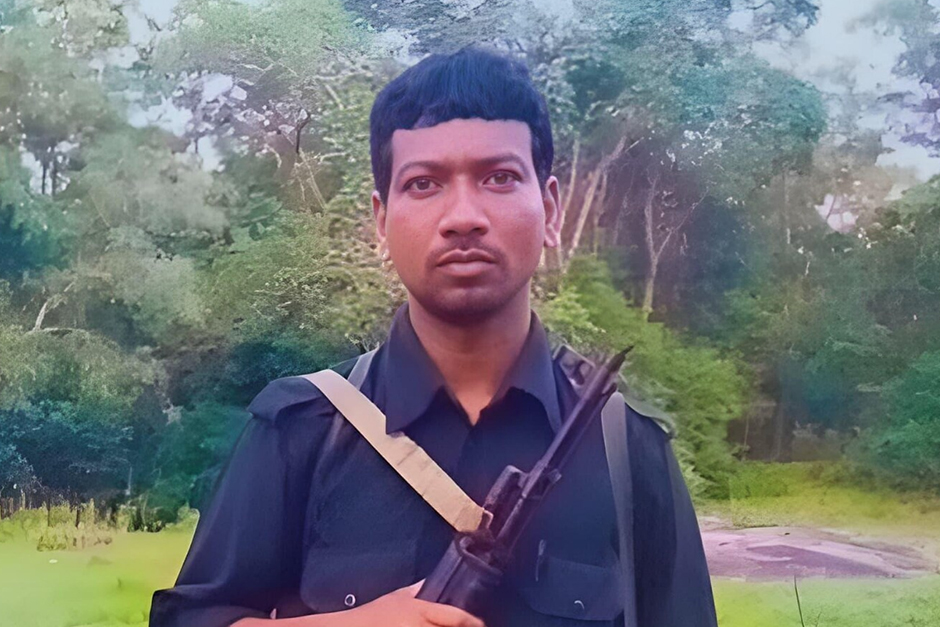A significant development in India’s protracted battle against left-wing extremism unfolded recently in Andhra Pradesh’s Alluri Sitharama Raju district. In a major operation, one of the most prominent and elusive Maoist leaders, Madvi Hidma, was reportedly among six cadre members gunned down in an encounter with security forces. The incident marks a considerable blow to the Communist Party of India (Maoist), particularly its military operations in the strategically vital Andhra-Odisha Border (AOB) region.
Hidma, a central committee member and military chief of the CPI (Maoist)’s Dandakaranya Special Zonal Committee, had been a top target for intelligence agencies and security forces across multiple states for years. His alleged death, if confirmed unequivocally by forensic reports, represents a high-profile success for anti-Naxal operations and could potentially disrupt the organizational structure and operational capabilities of the outlawed outfit.
The Alluri Encounter: A Calculated Operation
The encounter took place deep within the forested and remote terrain of the Alluri Sitharama Raju district, an area notoriously challenging for security forces due to its dense cover and difficult topography, often exploited by Maoists for hideouts and strategic movements. According to preliminary reports from police officials, the operation was initiated based on specific intelligence inputs regarding the presence of a significant Maoist contingent, including senior leaders, in the region.
Units of Andhra Pradesh’s elite anti-Naxal force, the Greyhounds, along with local police and potentially other central forces, launched a coordinated search and cordon operation. The confrontation reportedly ensued when the security personnel encountered the Maoist group. A fierce exchange of fire lasted for a considerable period, culminating in the neutralisation of six individuals. Following the gun battle, security forces recovered the bodies, along with a cache of weapons including assault rifles, ammunition, and other Maoist literature and camp materials from the encounter site.
While definitive identification of all deceased cadre members, including Hidma, is pending forensic verification, the initial assessment by intelligence agencies points strongly to the presence of high-ranking leaders. The recovery of weapons and documents provides crucial insights into the group’s activities and future plans, enabling further intelligence-led operations in the region.
Madvi Hidma: A Shadowy Figure in the Maoist Hierarchy
Madvi Hidma’s name has long been synonymous with some of the deadliest ambushes and attacks perpetrated by Maoists in Central India. Hailing from Sukma district in Chhattisgarh, Hidma rose through the ranks of the CPI (Maoist) primarily due to his tactical acumen and brutal efficiency in leading military operations. He was believed to be a key architect behind several major assaults on security forces, including the 2010 Tadmetla massacre, the 2013 Jhiram Ghati ambush, and the 2017 Burkapal attack, all of which resulted in significant casualties among security personnel.
His reported elevation to the central committee, the highest decision-making body of the CPI (Maoist), underscored his importance to the movement. Hidma was considered a strategic planner and a master of guerrilla warfare, operating primarily in the Bastar region of Chhattisgarh and having influence across the tri-junction areas of Chhattisgarh, Odisha, and Andhra Pradesh. His presence in the AOB region at the time of the encounter highlights the interconnectedness of Maoist operations across state borders and their efforts to maintain a contiguous ‘Red Corridor’.
The news of his potential death, if confirmed, would undoubtedly be a severe setback to the Maoist leadership, particularly in terms of command and control, as well as their ability to recruit and train new cadre. “Hidma’s elimination would signify a major blow to the military capabilities and strategic planning of the CPI (Maoist). His death would not only create a leadership vacuum but also severely impact the morale of their ground cadre,” stated a senior intelligence official, speaking on condition of anonymity due to the ongoing nature of operations.
Implications for Anti-Naxal Operations and Regional Security
The alleged killing of Hidma and his associates comes at a time when security forces have intensified their operations against left-wing extremism, particularly in key Maoist strongholds. Governments, both state and central, have adopted a multi-pronged strategy encompassing robust security interventions, targeted intelligence gathering, and simultaneous developmental initiatives in affected regions to address the root causes of insurgency.
While such operations are often lauded as significant victories, experts caution that the fight against Maoism is complex and prolonged. The Maoist movement has historically shown resilience in regenerating its leadership. However, the consistent targeting of high-value targets like Hidma can severely cripple their operational effectiveness, force them into retreat, and create opportunities for state agencies to further consolidate their presence and extend governance in previously inaccessible areas.
The incident in Alluri Sitharama Raju district underscores the continuous vigilance and sacrifice of security forces in tackling a persistent internal security challenge. It reinforces the commitment to dismantle the Maoist network, aiming for a future where peace and development can fully take root in the affected regions of India.
The coming weeks will likely see further official confirmations and analyses of the encounter’s full impact, as authorities work to verify identities and assess the broader strategic implications of this significant development.




